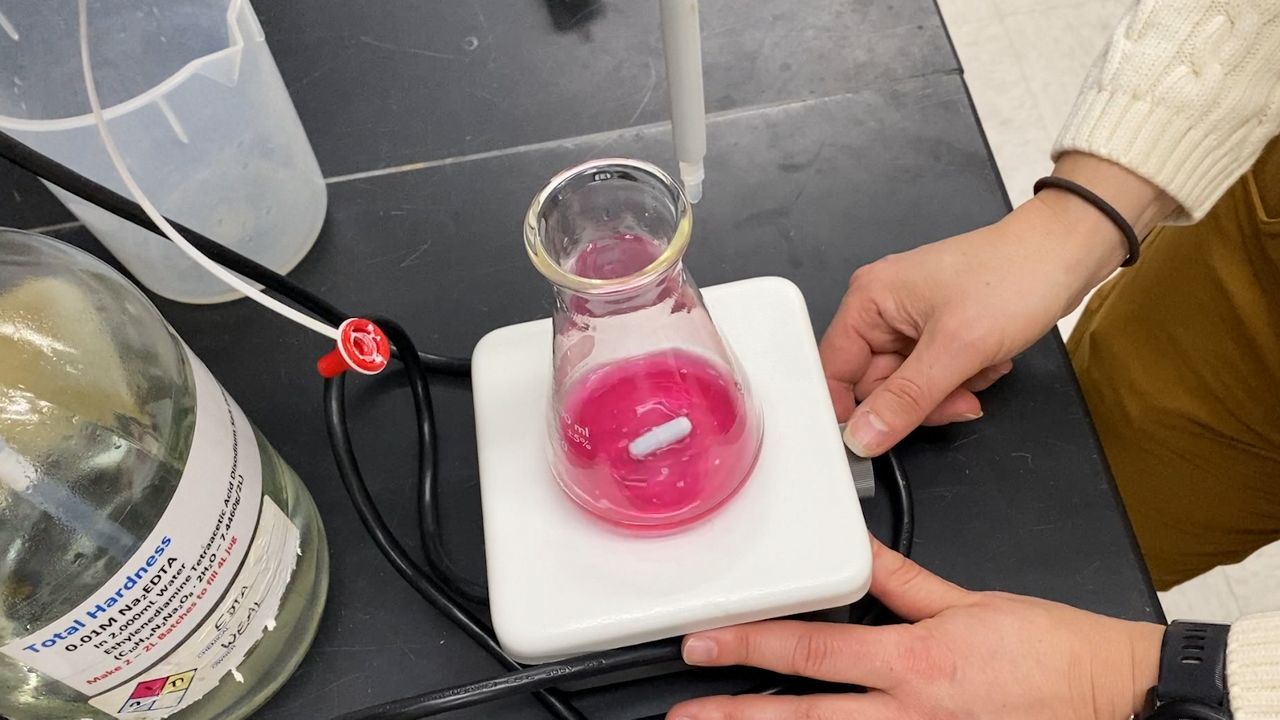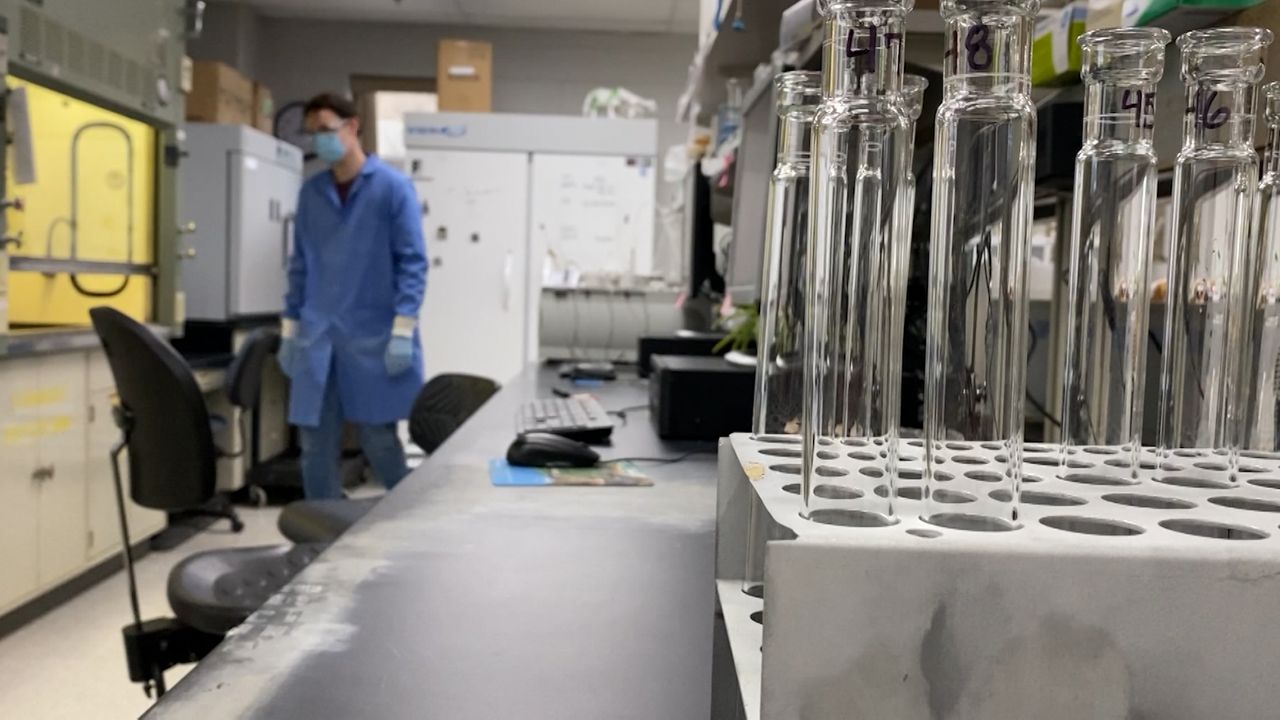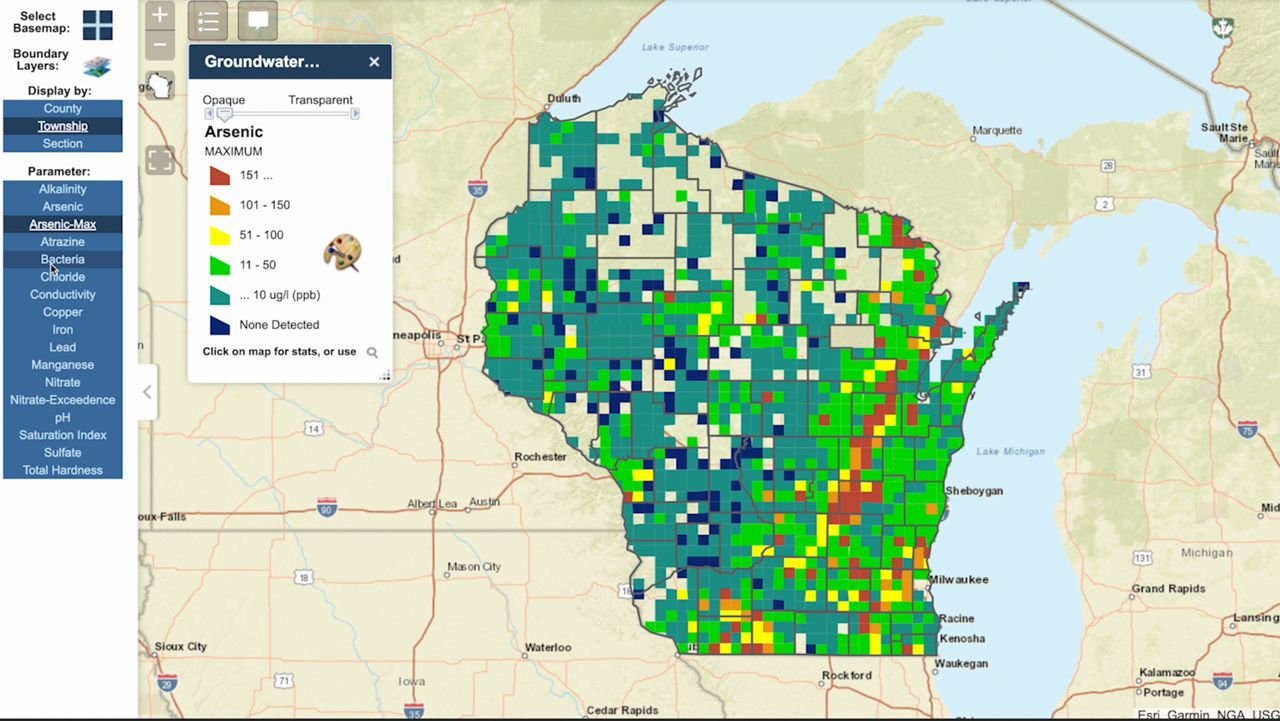STEVENS POINT, Wis. — What started as an environmental task force on the University of Wisconsin-Stevens Point campus 50 years ago by Byron Shaw has grown into an integral lab for testing Wisconsin water and training the next generation of water scientists.
What You Need To Know
- The WEAL lab has become an integral part of how Wisconsinites test and treat their water supply as well as a training ground for future water scientists
- WEAL began in 1972 as an Environmental Task Force the same year as the Clean Water Act
- The lab employs full-time staff plus 18 paid students. The lab provides testing and data interpretation across Wisconsin
- Testing fees and income from contracts make the lab self-sufficient
Many Wisconsinites, including those using well water, have come to rely on the Water & Environmental Analysis Lab.
“Homeowners who have wells as the primary source of their water are on their own basically to get their water quality tested, unlike a city or municipality where things have to be done following federal regulations and state guidelines,” said Juli Bowling, WEAL co-director.

The lab includes full-time staff like Bowling but also 18 students, who get compensated financially. The students also gain invaluable hands-on experience.
“They’re actually learning how to be laboratory professionals,” explained Bowling. “When they graduate from here, they have those credentials to be able to put forward for their next job.”
It all began in 1972, the same year the nation’s Clean Water Act was passed. The two aren’t directly related, but the timing makes sense to some.

“It was a time of increased awareness and concern with regard to water resources,” said Kevin Masarik, graduate education specialist.
Testing fees and contract work make the lab financially self-sufficient. Water testing kits can be requested and returned to the lab in person or via mail.
Using 50 years of sample data, they’ve also created an online interactive tool for the state’s well water.
“It shows hotspots for certain contaminants. If there are red flags of things we want people to consider testing for because they’re more prevalent in a certain area, that would be a really great resource to look at if you were trying to decide what to test for,” said Masarik.

Beyond well water, the lab works on groundwater issues, surface runoff and emerging contaminants like PFAS, or per-and polyfluoroalkyl substances.
“Our role is to investigate the resource, understand and characterize it in a way that provides the best information possible for other people in those positions to make the proper management decisions,” said Masarik.
Over a half-century, the technology and tools available to scientists have changed. The lab’s drive to inform the people of Wisconsin on water issues and advise possible solutions, however, has remained constant.
“I think our concerns are maybe different than 50 years ago, but there are still challenges that we need to meet. Different types of chemicals we didn’t realize were a problem 50 years ago are now at the forefront of our emerging contaminants,” said Amy Nitka, Organic Laboratory supervisor.



